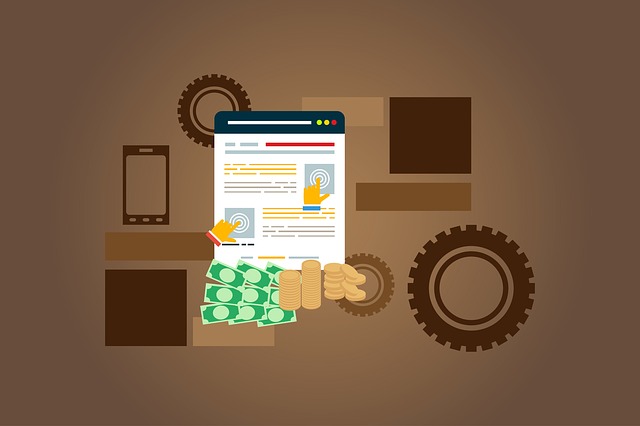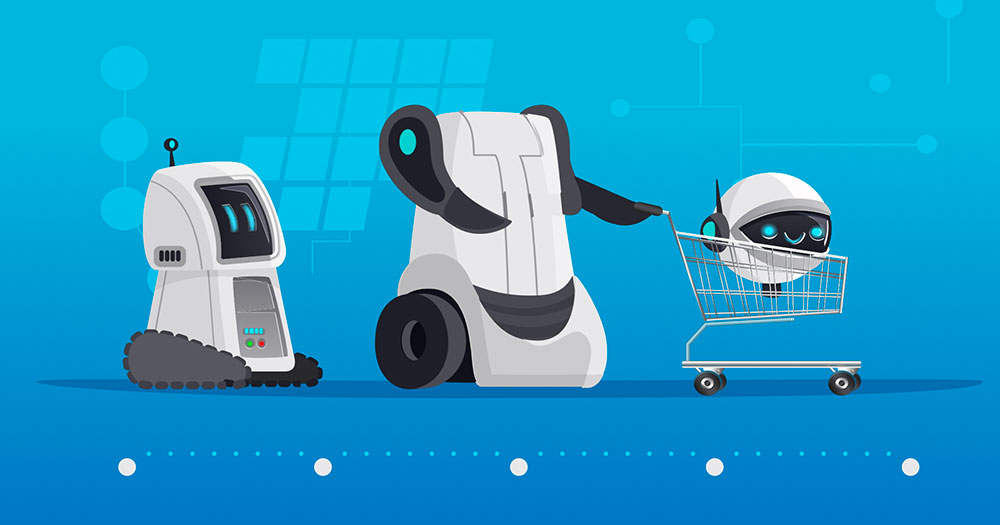With over 2.14 billion people expected to hit eCommerce websites in 2021, headless commerce becomes a viable solution to provide a frictionless user experience. As the ITProPortal points out, changing business environments and ensued disruptions can be better handled by eCommerce platforms that support headless commerce or microservices.
But why is headless commerce turning heads? The answer is simple. Headless commerce provides flexibility of operations. With the content presentation layer and the functional layer existing as separate entities, only connected through APIs, there is plenty of room for customization as well.
Before you wonder why headless commerce is becoming the rage, especially among marketers, let’s grab a look at its backstory. In the initial stages of eCommerce, online traffic triggered from desktops and the solutions were all-inclusive where the frontend and backend of the websites were coupled.
With constantly changing technologies, customers started purchasing from various devices, making it difficult for full-stack solutions to operate. Here is where eCommerce architecture of headless commerce emerged as a savior, providing a flawless operation of content and commerce.

Headless commerce separates the front end and back end of the eCommerce application. The data is transferred through APIs that act as a bridge between the content presentation layer and the application layer. A single backend can be effectively connected to multiple frontend applications and vice versa.
Why is Headless Commerce the Future?
By allowing space for personalization and seamless integration, headless commerce eases your business operations in numerous ways. Let’s see how.
- Ensures Flexibility of Operations
Your eCommerce website will manage the increasing customer demands with the backend being capable of carrying out highly complex transactions. You can update the content layer visible to the customers with much ease, aiding you in carrying out promotions without the help of developers. You can also eliminate the need for reconfiguring the full system.  Headless commerce provides you with the freedom to engage with customers in your desired way as opposed to traditional eCommerce websites. You are not stuck with any specific template as you will have full authority over the content. You are saved from recoding the platform while adding products or promotions, assuring a consistent content layer. Through effective APIs and application layers, headless commerce also ensures that new pages or sites are launched quicker, coping up with the changing trends or market opportunities. Headless commerce ensures customer retention as 88% of the customers are otherwise less likely to return after a bad shopping experience.
Headless commerce provides you with the freedom to engage with customers in your desired way as opposed to traditional eCommerce websites. You are not stuck with any specific template as you will have full authority over the content. You are saved from recoding the platform while adding products or promotions, assuring a consistent content layer. Through effective APIs and application layers, headless commerce also ensures that new pages or sites are launched quicker, coping up with the changing trends or market opportunities. Headless commerce ensures customer retention as 88% of the customers are otherwise less likely to return after a bad shopping experience.
- Enables Omnichannel Experience
According to Harvard Business Review, over 73% out of the 46,000 shoppers surveyed, purchased through multiple channels. With omnichannel sales gaining momentum, a responsive design that does not impose restrictions is imperative. Adding new sales channels is faster in headless commerce as developing separate backends for each of these new channels is not necessary. The breaking down of traditional framework into modular systems calls for consistency and interaction among various eCommerce touchpoints. Adapting your eCommerce website with this dynamic shift is made easier through headless commerce that befriends IoT and API economy, enabling communication with other platforms.  Going the headless way, you can display products in innovative ways like a 3D user interface or animations irrespective of the channel. In such cases, the backend code remains the same as only the user interface changes. Headless commerce effectively handles order management from multiple channels as it expands the scope for a unified inventory management system. The unconfined template results in the better categorization of contents, storefront, and products.
Going the headless way, you can display products in innovative ways like a 3D user interface or animations irrespective of the channel. In such cases, the backend code remains the same as only the user interface changes. Headless commerce effectively handles order management from multiple channels as it expands the scope for a unified inventory management system. The unconfined template results in the better categorization of contents, storefront, and products.
- Enhanced Customization
Unlike the traditional and pre-designed monolithic architecture, headless eCommerce websites give space for customization. Providing product recommendations and showcasing various offers are made simpler by having the upper hand in CMS, thereby improving Average Order Value (AOV) and Customer Lifetime Value (CLV). By facilitating the development of custom SaaS applications within no time, customization and speed will be at your doorstep. With its open source component libraries and built-in toolset, accessibility and customization can be implemented efficiently, proving the point that the future of SaaS is shaped better with headless eCommerce platforms. With headless eCommerce that comes with RESTful API and since the REST protocol separates UI from the server, you can now decide how the frontend should look like. The customer-centric proposition drives marketing strategies towards migrating to headless commerce that guarantees catering to customer needs.

- Seamless Integration
The API-driven headless commerce platform allows frictionless integration with other systems and platforms like marketing automation tools, ERP, or CRM. Such API-driven integration eliminates the need for partial integrations and its associated complexities that include plugins, which require timely updations. The interaction of software platforms is made easier with APIs and hence, data transfer will be carried out efficiently, saving a good deal of your blood, sweat, and tears. Integrating your eCommerce platform will no longer be a timely process. The flexible UI layer that is synchronized with the backend calls for easy data extraction, benefiting both the parties. You can also integrate backend functionalities into various systems without disrupting the customer’s shopping activities and the overall architecture.The bi-directional data flow also reduces manual labor, enabling you to carry out business operations quicker. Such perfect integration is possible with various components of your eCommerce website being decoupled. With such deep-level integrations, you can choose the right APIs to execute any required job.
- Improves Speed and Performance
Adopting a new market trend will never be time-consuming as you can make changes without affecting the speed or performance of your eCommerce website. The openness of the architecture allows you to add more functionalities with improved speed and you are not required to restart your system to make any updates.
 Better maintenance, responsiveness, and faster updates are possible, improving the performance of your eCommerce website. Modifications in the user interface can be made better without catering to full-stack software. Changes in the backend and the frontend can be made simultaneously without creating any disruptions for the site visitors, ensuring speed and agility.Since the headless commerce is API-driven, you can implement a data cache layer between the frontend and the backend. So the catalog requests and the static content requests can be stored in this particular layer. In this way, the content will be loaded at a much greater pace, reducing the customer churn as the attention span of the customers is constantly decreasing.
Better maintenance, responsiveness, and faster updates are possible, improving the performance of your eCommerce website. Modifications in the user interface can be made better without catering to full-stack software. Changes in the backend and the frontend can be made simultaneously without creating any disruptions for the site visitors, ensuring speed and agility.Since the headless commerce is API-driven, you can implement a data cache layer between the frontend and the backend. So the catalog requests and the static content requests can be stored in this particular layer. In this way, the content will be loaded at a much greater pace, reducing the customer churn as the attention span of the customers is constantly decreasing.
Headless Commerce in the Age of IoT
As the new dawn breaks in eCommerce, the API economy, headless commerce, and Internet of Things (IoT) are delivering flawless business operations that are second to none. Headless commerce is perfectly curated to meet with the growing trend of IoT. Its architecture delivers content or payment gateways to Alexa Skills, smartwatches, and kiosk screens.Along with IoT commerce comes another trend of API economy, enabling easy projection of information. The flexibility and adaptability of headless commerce architecture allow both B2B and B2C eCommerce websites for the flawless transmission of data through enhanced functionalities including AI assistance or voice activation in an IoT ecosystem.  With IoT-enabled devices expected to reach 25 billion in 2021, the shopping habit of digital shoppers is drastically changing. Your traditional eCommerce platform is not accustomed to coping with such drastic shifts. Thus, moving to headless commerce is your only way up the ladder.
With IoT-enabled devices expected to reach 25 billion in 2021, the shopping habit of digital shoppers is drastically changing. Your traditional eCommerce platform is not accustomed to coping with such drastic shifts. Thus, moving to headless commerce is your only way up the ladder.
Three Things to Consider While Migrating to Headless Commerce
Before heading for the big plunge, here are the few things that you have to consider-
1. Understand Current Shortcomings
After deciding to move to a headless eCommerce platform, analyze the performance of your current eCommerce platform. Take note of its shortcomings and keenly understand the areas that require improvement. Have a fair idea about how the transition is going to be and set your priorities right. Since the horizon of marketing opportunities is about to expand with headless commerce, start mapping out new strategies during this transition period.
2. Create a Mind Map
Having a clear idea about when and how to migrate is crucial for any business irrespective of whether it is B2B or B2C. Think about the kind of frontend experience that you want to provide to your customers. Since the decoupling allows you to alter the frontend, you can experiment with the new layout. But it is also equally important to decide when to migrate your frontend, whether it should be during the platform switch or after. This is the period to decide when to move data that include orders, product catalogs, and user profiles. Also, set deadlines for each step.
3. Sort Out Your Data
While the technical team takes up the data handling, your digital marketing team should have a hand in the data modeling subtypes, objects, or attributes. While importing, you should verify all the data as they would define how your online storefront will be projected. An uncomplicated migration of product catalog data cannot be overlooked as it is the source of income that contains the major content. After the migration, the customer’s credentials need to be updated to ensure safety.
The Future of Headless Commerce is Now
The unending transformations in the digital space call for concrete changes in your strategies and operations. With the increasing customer demands and expectations, adopt the new architecture of headless commerce to scale up customer acquisition and conversion rates. Providing you the endless freedom to experiment, it opens up a plethora of choices to elevate your brand. Since the future of eCommerce is undisputedly ‘headless’, choose the best eCommerce platform and migrate to headless commerce.
Contents




